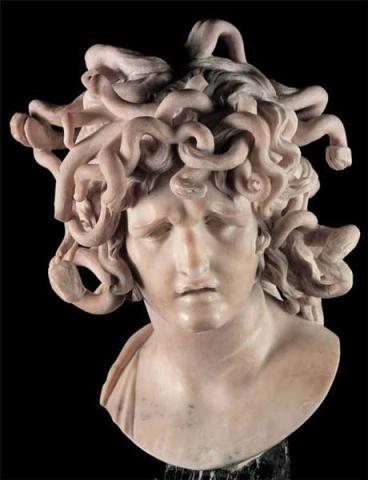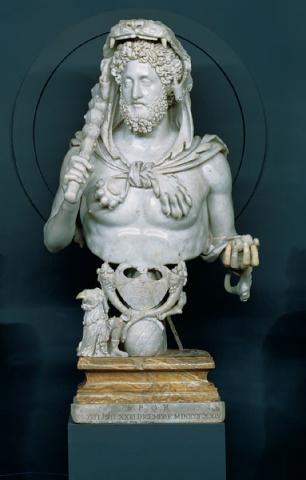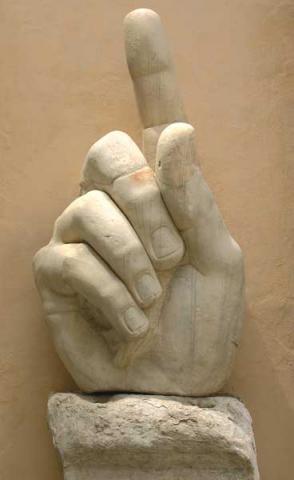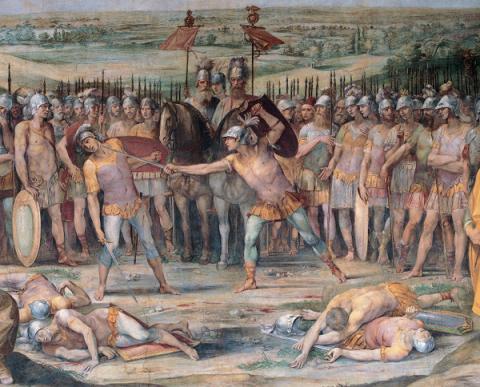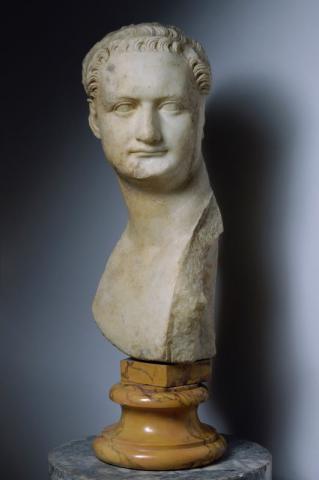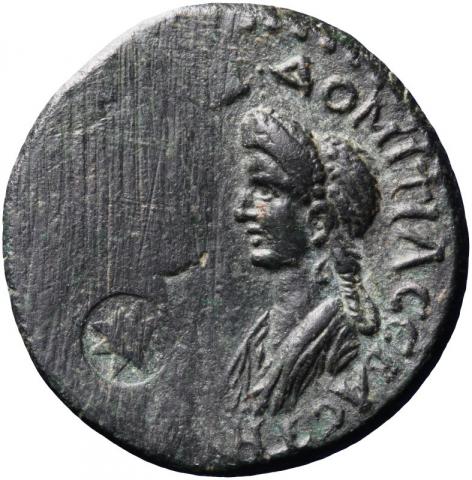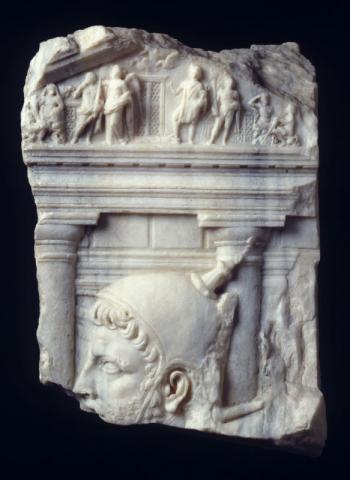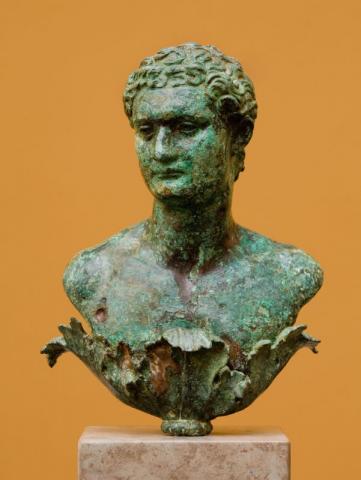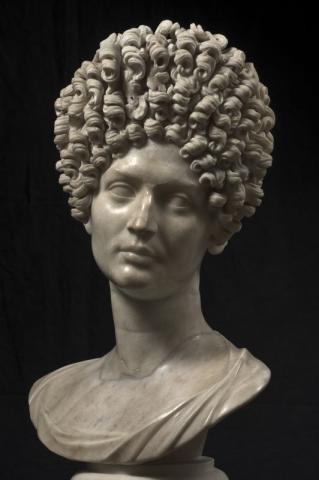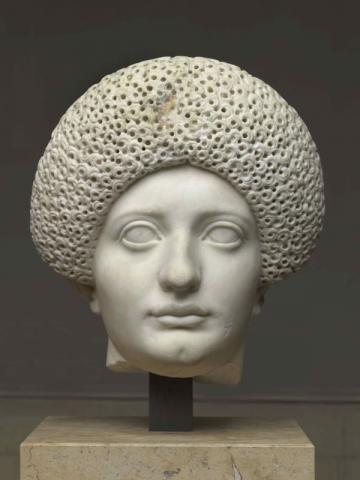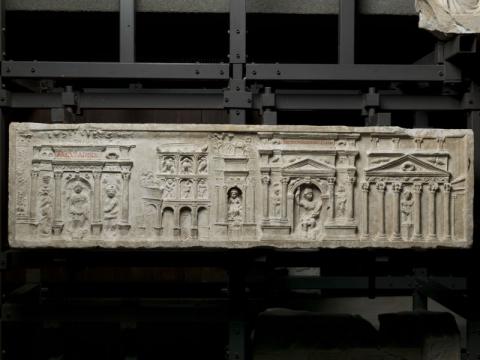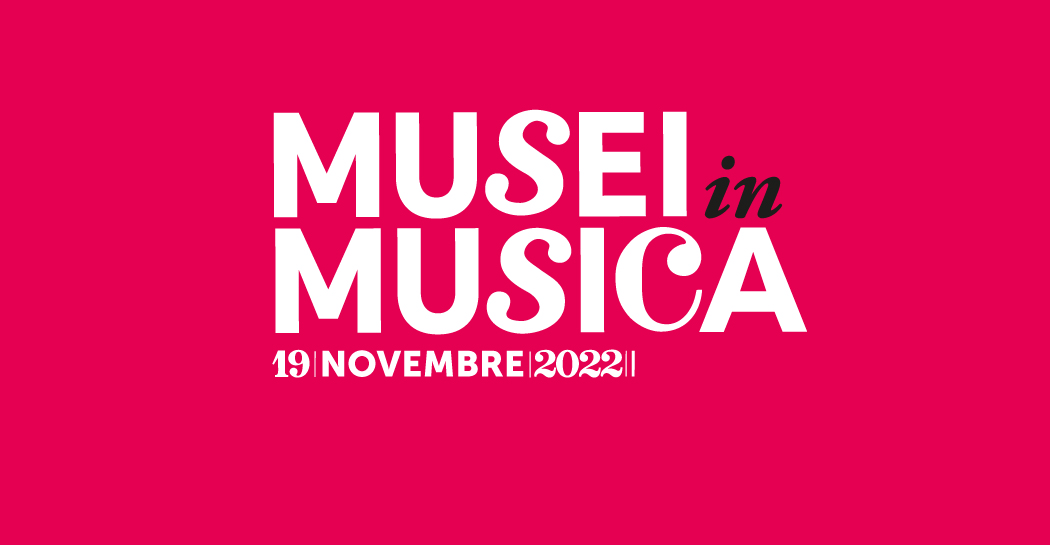Domiziano Imperatore. Odio e amore
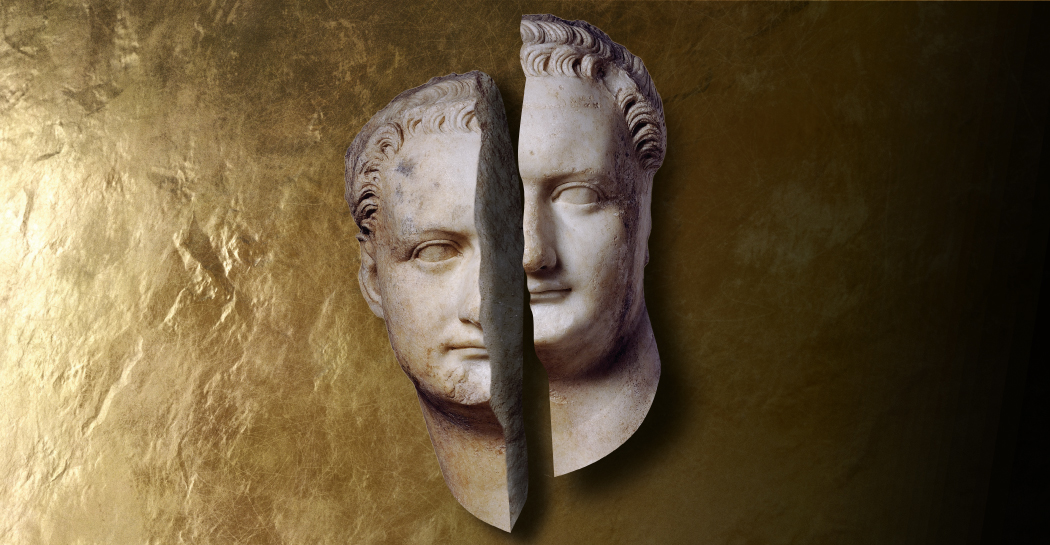
The exhibition dedicated at Domiziano, the last emperor of the gens Flavia, loved and hated in life as well as in death, describes the complex and the conflicts of this figure and his empire. On display are almost 100 works from some of the most important international and Italian museums.
The new exhibition location of the Musei Capitolini, Villa Caffarelli, hosts a major exhibition of Roman archaeology.
The exhibition Domiziano imperatore. Odio e amore is co-produced by the Sovrintendenza Capitolina ai Beni Culturali and the Rijksmuseum van Oudheden of the Dutch city of Leiden; it is therefore the result of a cultural agreement with an international dimension.
Wim Weijland, Nathalie de Haan, Eric M. Moormann, Aurora Raimondi Cominesi and Claire Stocks conceived and curated the exhibition God on Earth. Emperor Domitian, hosted in Leiden from 17 December 2021 to 22 May 2022, in which the Sovrintendenza Capitolina participated with important loans.
In continuity with it and taking over part of the scientific project and loans, the Sovrintendenza Capitolina has developed in the new exhibition a different articulation of the story and exhibition itinerary also thanks to the addition of new works. The choice of exhibition venue was also significant, in a place that was strongly linked to the emperor and luxuriously restored by him after the fire of 80 AD: the Tempio di Giove Capitolino, on whose foundations Villa Caffarelli was built.
THE EXHIBITION
Throughout the 15 rooms of the exhibition, the exhibition tells the story of Domiziano, a complex figure of a prince and despot who was not understood by his contemporaries and later by posterity, who based their judgement on historical and literary sources that were substantially against him. More recently, the analysis of material sources, in particular epigraphic ones, has returned the image of an emperor attentive to good administration and the relationship with the army and the people, devoted to the gods and a reformer of the morality of men. An emperor who neither demanded nor encouraged the autocratic 'dominus et deus' formula, considered by many to be the profound motivation for the climate of suspicion, terror and death sentences that led to the conspiracy in which he lost his life. The violent damnatio memoriae that, according to the dramatic testimony of Svetonio and Cassio Dione, would have led immediately after his death to the demolition of the statues that portrayed him and the erasure of his name from public inscriptions, was in reality limited to a few contexts and is not confirmed by the number of portraits that have come down to us in Rome and throughout the Empire.
The account of Domiziano's life is entrusted to the 58 works from the Leiden exhibition and the 36 added for the Roman edition: marble and bronze portraits of imperial personages and gods, elements of architectural decoration in white and coloured marble and small objects in gold and bronze.
The museums that collaborated in the exhibition with their loans are the British Museum in London, the Ny Carlsberg Glyptotek in Copenhagen, the Musée du Louvre in Paris, the Nederlandsche Bank, the Rijksmuseum van Oudheden in Leiden, and the Badisches Landesmuseum in Karlsruhe, the Glyptothek in Munich, the Musei Vaticani, the Museo Archeologico dei Campi Flegrei, the Museo Archeologico Nazionale in Napoli, the Parco Archeologico di Ostia and, from Roma, the Museo Nazionale Romano and the Parco Archeologico del Colosseo - Antiquarium Palatino. Among the loans, all important, are the aureus in the name of Domizia Longina, the emperor's wife, with the representation of her deified son from the British Museum; the portrait also of Domizia Longina from the Louvre; the relief from the Mausoleo degli Haterii in the Musei Vaticani; the colossal heads of Vespasiano and Tito deified from the Museo Nazionale Archeologico in Napoli and the fragments of the Dono Hartwig from the Museo Nazionale Romano.
The exhibition is also enriched by works from the Sovrintendenza Capitolina that are not normally on public display. The Antiquarium exhibits include one of the panels with frescoes from the Roman domus reassembled in the early 2000s in the 'sala E. Pastorelli' in the 'sala E. Pastorelli' of the Comando Provinciale dei Vigili del Fuoco in via Genova, which was made available for the exhibition thanks to the cooperation between the two institutions.
Among the marble sculptures from the capitolini's deposits, two little-known works from the Stadio di Domiziano stand out: the torso of the statue of Hermes unfastening a sandal, only seen in the exhibition Lisippo at the Palazzo delle Esposizioni in 1995, and the head of a young laughing satyr crowned with pine. Among those in the permanent collection of the Musei Capitolini is the female portrait of the 'Dama Flavia' (the so-called 'Fonseca bust').
WORKS, ROOMS AND THEMES
The first work and icon of the exhibition, in Leiden as in Rome, is the famous portrait of Domiziano preserved in the Musei Capitolini. It is the starting point for the exhibition, which is divided into 15 rooms and developed along five major themes: Domiziano, emperor and dear to the gods; the exaltation of the gens Flavia and the dynastic propaganda; Domiziano's private places, from the house where he was born on the Quirinale to the imperial palace on the Palatino and the villa in Albano; the intense building activity in Roma; the empire protected by the army and governed by good administration.
The statue of Domiziano's Genius is at the centre of the first room, dedicated to the caducity of life, ideally represented by child portraits, alluding to the emperor and his little son who died prematurely, and by the showcase "of the time of life": on the face of a clock, a conceptual and visual solution to make the fast and inexorable passing of time perceived with immediacy, eight objects-symbols symbolise the crucial moments of the emperor's life, indicated by the dagger-hand that will kill Domiziano. The gallery of portraits shows the evolution of Domiziano's iconography over time. Accompanying the emperor are his father Vespasiano and his brother Tito, as well as the Augusta Giulia daughter of Tito and Domizia Longina, whose refined hairstyles are emulated by the ladies of the flavia age, but also his extended family, composed of freedmen and slaves. The damnatio memoriae decreed by the Senate in the aftermath of his assassination was instead commemorated by two inscriptions and a coin, on which his memory was erased.
The concept of dynastic continuity dominated much of the actions of Domiziano, leading to the celebration of the gens Flavia through the erection of honorary arches to his deified brother and, on the site of his birthplace, through the construction of the Templum Gentis Flaviae, a monument that revived but also broke with the site and the tradition of the Mausoleo di Augusto. The exceptional colossal head of deified Titus and the fragments of the Dono Hartwig show the conceptual and dimensional majesty of the temple complex dedicated to the family Flavia.
The theme of the emperor's private places starts from the context of the Quirinale, the hill where Domiziano was born, to arrive at the architectural and decorative grandeur of the villas outside Rome and, above all, the imperial palace on the Palatino, the work of the architect Rabirio. This is the place where the emperor appeared as dominus and where Flavian opulence and luxury were most expressed, thanks to new architectural and decorative languages, which resorted to the massive use of coloured marble.
The tour through the public places of the Domiziana age illustrates the intensive building activity developed both in the reconstruction of the buildings destroyed by the fire of 80 A.D. and in the realisation of new monuments functional to imperial propaganda. These include the Forum Transitorium, built by Domiziano but inaugurated by his successor Nerva, and the planning of an urban arrangement of the area between the Quirinale and the Campidoglio through the excavation of the mountain saddle that joined the two hills. It is possible to get a sense of this intervention through an immersive video made especially for the exhibition and destined to become one of the communication products of the Museo dei Fori Imperiali. In the entertainment buildings ( Stadio, Odeon, Anfiteatro Flavio), popular acclaim was most evident; the impression and atmosphere they aroused in the audience is evoked by the cast of the tomb of Quintus Sulpicius Maximus, who died at the age of 11, whose inscription recalls the child prodigy's brilliant participation in the third Capitoline Greek poetry competition, and by the bronze coin with the effigy of the rhinoceros, never seen in Roma before the games in the Anfiteatro commissioned by Domiziano.
The section on Domiziano 'outside Roma, outside the borders', introduced by the map of the Empire, deals with the relationship with the army and the building and monumental activity in the cities and territories of the empire, confirmation of a cohesion that was not only military but also social.
Episode 1
Episode 2
Episode 3
Episode 4
Information
From July 13, 2022 to January 29, 2023
Every day 9.30 - 19.30
24 and 31 December 9.30 - 14.00
Last admission one hour before closing time
Closed:
25 December
Before planning the visit, CONSULT THE NOTICES
Combined ticket exhibitions + Musei Capitolini
adults: € 16,00
concessions: € 14,00
Ridottissimo special price: € 2,00 (due to the exceptionality of the exhibition, people usually entitled to free admission must purchase ridottissimo ticket. Free admission is granted to children under 6 years, groups of elementary and (lower) middle schools, to visitors with disabilities and a family member or a carer and on the occasion of institutional visits)
For all information see the tickets page
Free admission with MIC card
Call. 060608 (every day 9.00 - 19.00)
The exhibition is promoted by
Roma Culture - Sovrintendenza Capitolina ai Beni Culturali
Organization
Zètema Progetto Cultura
Press Room
Gallery
Eventi correlati
1012167
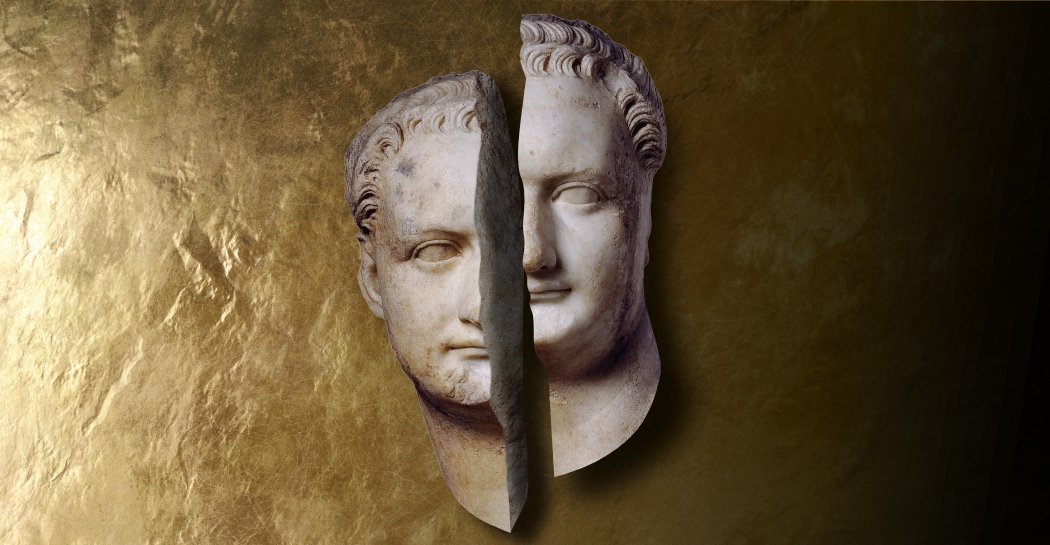
1012100
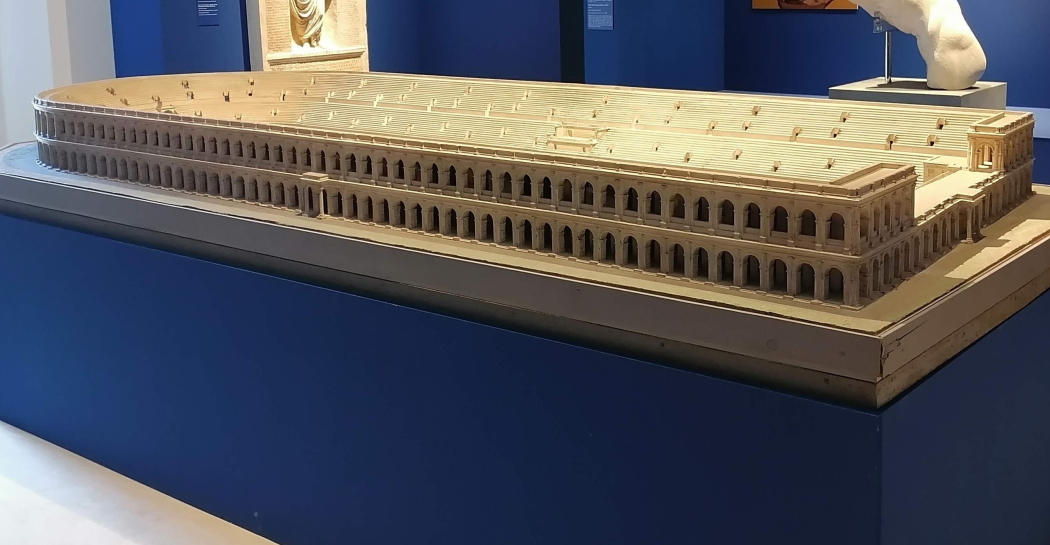
1011966
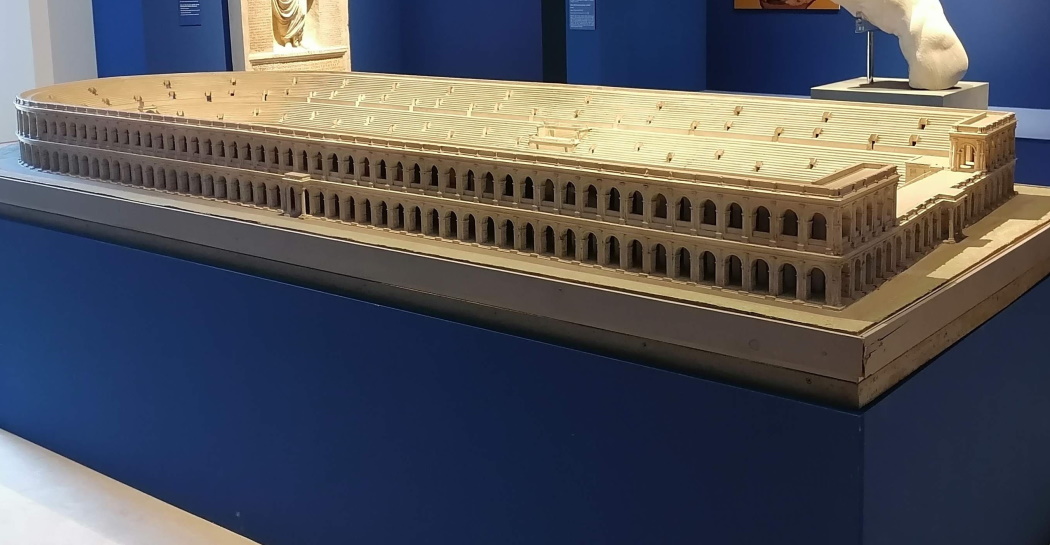
1011615

1011614



























